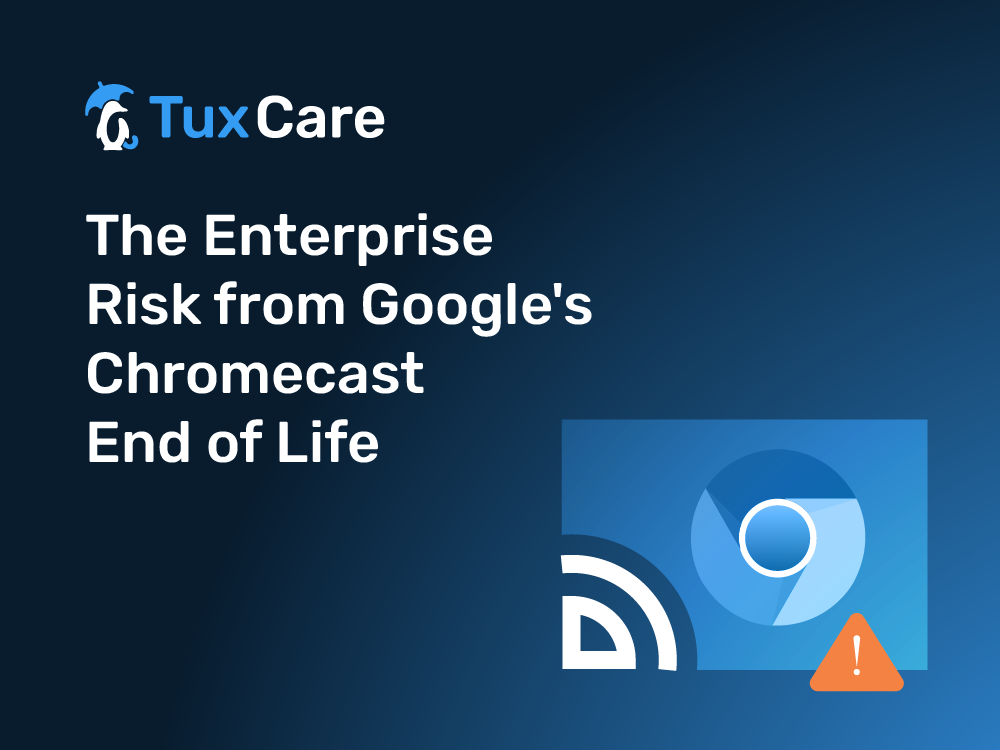The Enterprise Risk from Google’s Chromecast End of Life
Google recently announced the end of life for its first-generation Chromecast device. This move essentially puts the final nail on updates, security patches, and technical support for these devices. While the Chromecasts will continue to function, the lack of security support moves them squarely into the category of potential liabilities, especially considering the significant number of people still working from home.
Chromecast was Google’s best selling hardware offering, selling 10 million units in 2014 alone, and repeatedly highlighted in shareholder calls. Its appeal is found in its simplicity: no default interface, incapable of running apps, and lacking any control mechanism of its own. This device served solely as a media receiver for the cast button in various apps like YouTube.
As a result, the original Chromecast technology stack is now effectively obsolete. While the devices will continue to work, they will no longer receive any security updates.
The Work-from-Home Element
A significant percentage of the workforce is still working remotely. According to a Stanford study conducted in early 2023, 27% of full-time paid days were worked from home in the US. Given the vast number of original Chromecast devices sold, it’s reasonable to assume that many of these remote workers have these devices in their home networks.
The Security Implications
Past data breaches have demonstrated how unpatched systems at home can compromise enterprise networks. One sobering example is the massive breach at LastPass, which occurred as a result of an engineer’s failure to update Plex software on their home computer.
This failure allowed attackers to exploit a nearly three-year-old flaw in Plex (that had already been patched on contemporary versions of Plex at the time) to achieve code execution on the engineer’s computer. The LastPass employee never upgraded their software to activate the patch, highlighting the risk of out-of-date software.
The same risks apply to Chromecast devices. Even if an employer enforces strict patching requirements on the devices that connect to the internal systems, the Chromecast doesn’t connect directly. Instead, it exists as a potential liability in the employee’s home network. It could serve as a stepping stone for attackers to gain access to other systems in the home network and, from there, to connected systems inside the enterprise network. This type of lateral movement inside a network is typically seen in poorly segmented networks with IoT devices. It is fair to assume that only a residual number of home networks will have any kind of segmentation that separates media dongles like the Chromecast from other systems.
Mitigation Strategies
Mitigating this risk is challenging due to the indirect nature of the threat. Encouraging employees to upgrade to newer devices that still receive security updates may be one strategy. Employers might also consider implementing more robust security measures for remote access to corporate networks to help prevent any potential breaches. Raising the requirements for timely patching of known vulnerabilities on the systems that the Enterprise can manage and enforce, including connecting client devices, is also a good starting point.
Nevertheless, the end of life for the original Chromecast serves as a reminder of the evolving landscape of cybersecurity threats, especially in the context of remote work. It underscores the need for both individuals and organizations to remain vigilant in maintaining up-to-date security measures across all devices connected to their networks. It is also another stark reminder of the importance and need for proper support for all running devices inside a network, no matter how intrinsically important they are, or appear to be, at first glance. Your Chromecast, like your toaster, can, and will, hack you.
Final Words
The announcement of the end of life for Google’s first-generation Chromecast device highlights the potential security risks associated with outdated devices in the context of remote work. While the devices will continue to function, the lack of security updates makes them vulnerable to exploitation, which can have serious implications for both individuals and organizations.
The prevalence of these devices in home networks used for remote work increases the risk of attackers gaining access to enterprise systems through lateral movement. To mitigate these risks, encouraging employees to upgrade to newer devices, implementing robust security measures for remote access, and enforcing timely patching are important steps.
This serves as a reminder of the evolving cybersecurity landscape and the need for ongoing vigilance in maintaining up-to-date security measures across all connected devices. The end of life for the Chromecast device emphasizes the importance of proper support for all running devices within a network, as even seemingly insignificant devices can become potential hacking targets.



 Documentation
Documentation Login
Login



